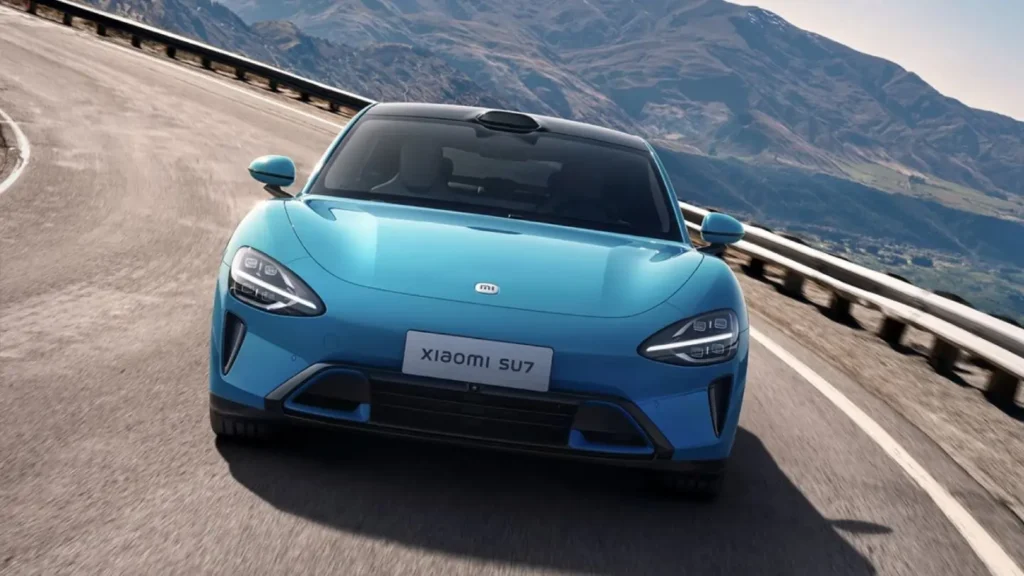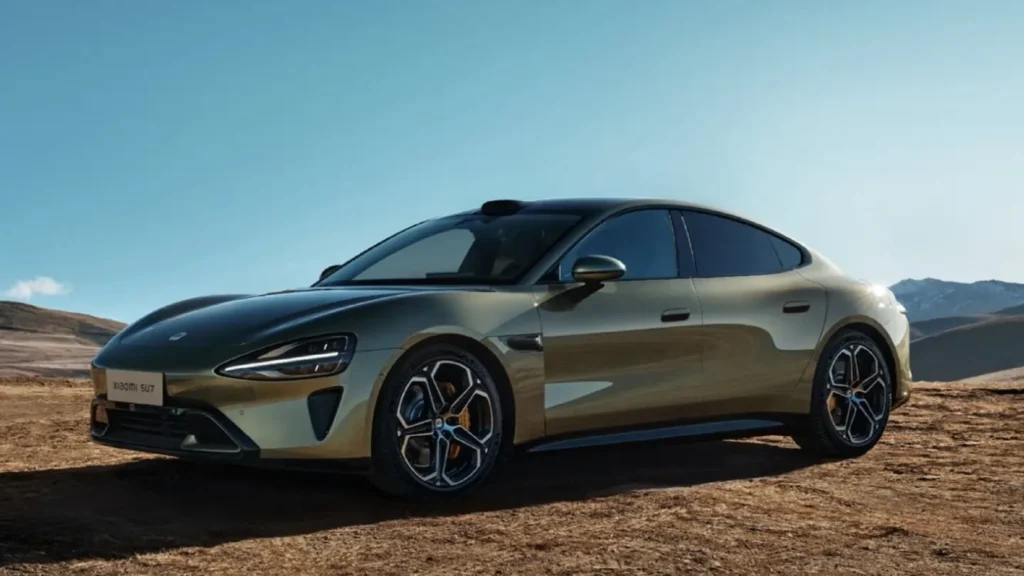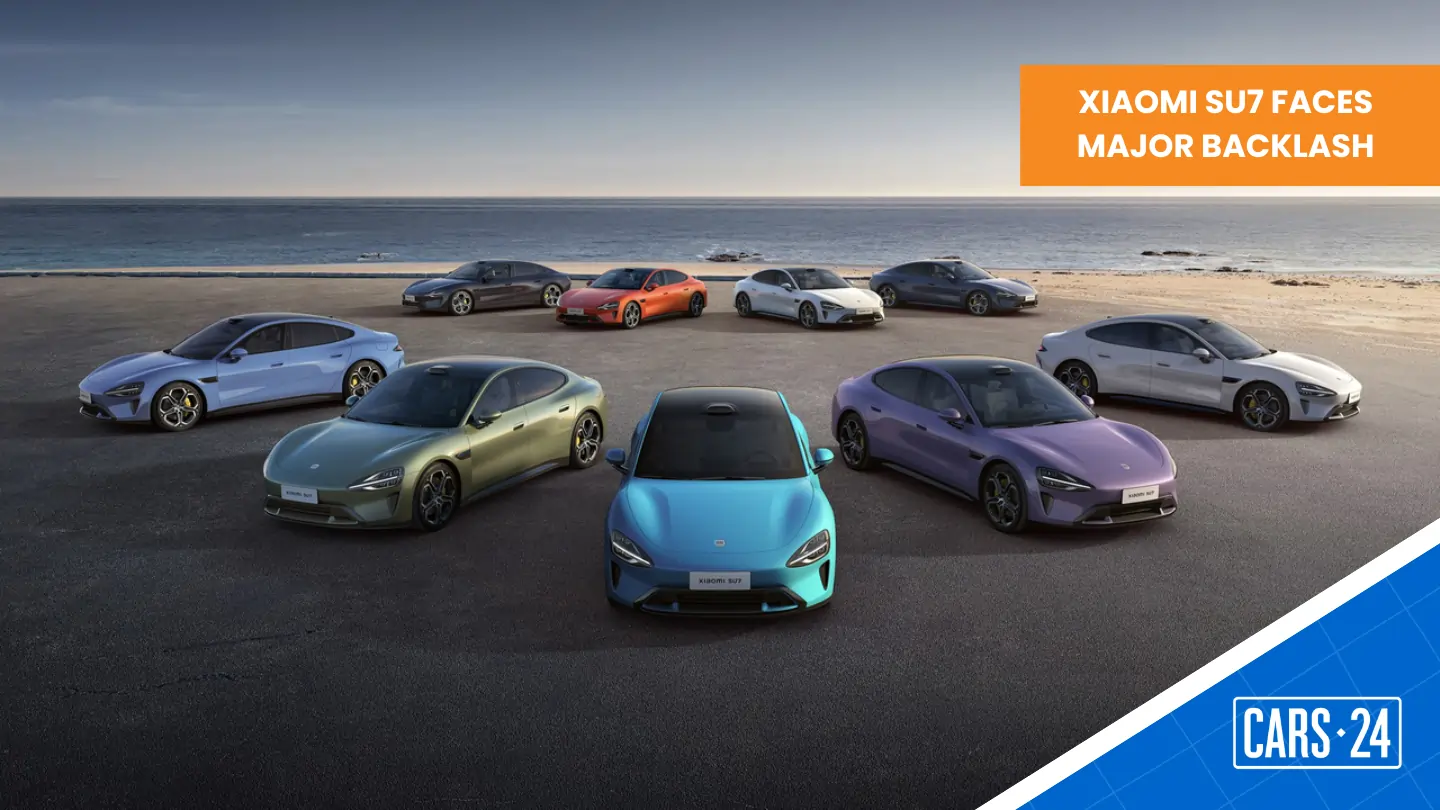When Xiaomi, best known for its sleek smartphones and other consumer electronic offerings, announced it was entering the electric vehicle game, the world took notice. Its first car, the Xiaomi SU7, promised blistering speed, futuristic tech, and a design bold enough to rival even the likes of the Porsche Taycan. But just a few months in, what was once hailed as a triumph of Chinese EV innovation is now facing a wave of backlash.
Get a Roadworthy Certificate fast and convenient with CARS24, book an appointment for the inspection, and the rest is simple.

From hype to headline-grabbing controversy
It all started in late March 2025 with a tragic accident: a Xiaomi SU7 reportedly collided with a highway barrier and caught fire, killing three people. Suddenly, attention turned to the car’s high-powered specs—1138kW and 1770Nm of torque, and whether such a beast should be sold to drivers without track-level training. Questions also swirled around the safety of its electronic door locks and driver assistance systems.
Taking back what customers paid for
In what looked like a reactionary move, Xiaomi rolled out a software update that dramatically cut the car’s power output to 662kW. Launch control? Locked for the first 60 seconds. And if owners wanted to unlock the car’s full potential again, they’d need to prove their skills with a qualifying lap time on an approved racetrack. While well-intended, Xiaomi reportedly executed this update without clear communication or consent from the owners of the SU7.
As you’d expect, that didn’t go down well. Owners voiced their frustration loudly and widely. Xiaomi, to its credit, responded by walking back the restrictions. “We appreciated the passionate feedback from our community,” the company said, vowing to be more transparent in future updates.
With its full power restored, the SU7 Ultra can sprint from 0 to 100km/h in a staggering 1.98 seconds. However, the performance debate wasn’t the only headache Xiaomi had to deal with.

A “functional” bonnet that isn’t?
Another controversy soon erupted, this time over the SU7’s optional carbon-fibre bonnet. Xiaomi had claimed it improved airflow and cooling through dual air ducts. However, tests by keen-eyed owners revealed the vents appeared to be non-functional.
Faced with mounting complaints (and potential legal action), Xiaomi admitted its messaging was unclear. Affected customers were offered loyalty points and the option to swap to the standard aluminium hood, but there’s a catch. According to reports from CarNewsChina, wait times for the replacement part could stretch up to 40 weeks. That’s nearly a year of frustration for some.
What’s next?
Despite the growing pains, Xiaomi isn’t backing down from its EV ambitions. Later this year, the company plans to launch its second electric car, the YU7—a mid-size SUV aimed at a broader market. And while the SU7 remains China-exclusive for now, Xiaomi has already signalled plans to go global.
The SU7 saga reminds us that building a car, especially one that can compete with Ferrari and Porsche, is no easy feat. Xiaomi has the tech credentials and fan base, but winning trust in the automotive world takes more than horsepower and hype. It takes time, transparency, and a whole lot of resilience.

Comments
New Comment